164 LESSON 10 02 2011 The Story of Bala Nakkhatta Festival FREE ONLINE eNālandā Research and Practice UNIVERSITY to VOTE for BSP ELEPHANT for Social Transformation and Economic Emancipation to attain Ultimate Bliss
through
http://www.orgsites.com/oh/awakenedone/
Awakeness Practices
All 84,000 Khandas As Found in the Pali Suttas
|
Traditionally the are 84,000 Dharma Doors - 84,000 ways to get Awakeness. Maybe so; certainly the Buddha taught a large number of practices that lead to Awakeness. This web page attempts to catalogue those found in the Pali Suttas (DN, MN, SN, AN, Ud & Sn 1). There are 3 sections: |
The discourses of Buddha are divided into 84,000, as to separate addresses. The division includes all that was spoken by Buddha.”I received from Buddha,” said Ananda, “82,000 Khandas, and from the priests 2000; these are 84,000 Khandas maintained by me.” They are divided into 275,250, as to the stanzas of the original text, and into 361,550, as to the stanzas of the commentary. All the discourses including both those of Buddha and those of the commentator, are divided into 2,547 banawaras, containing 737,000 stanzas, and 29,368,000 separate letters.
Course Programs:
LESSON 164
-27-

(2:7)
Don’t indulge in heedlessness!
Don’t come near to sexual joys!
The heedful and contemplative
attains abundant bliss.
Explanatory Translation (Verse 27)
pamadam ma anuyuftjetha kamaratisanthavam
ma (anuyuftjetha) appamatto hijhayanto vipulam
sukham pappoti
pamadam: heedlessness; ma: do not; anuyuftjetha: indulge in; kamaratisanthavam: sensual pleasures; ma: avoid; appamatto hi: the mindful person; jhayanto: meditatively engaged; vipulam sukham: high-bliss; pappoti: reaches.
Do not indulge in heedlessness. Avoid craving for sensual pleasures, whatever their nature. The mindful person is tranquil in mind. He will attain the great bliss.
Commentary
kamarati santhavam: the expression implies indulgence in sensual pleasures. The stanza stresses the fact that such indulgence leads to the relaxation of mindfulness and the flagging of enthusiasm for truth-seeking. The implication here is that one should not give in to attachments, whatever their nature. Therefore, the main emphasis is on the need to avoid tanha which is literally translated as “thirst”. It is this “thirst”, desire, greed, craving, manifesting itself in various ways, that gives rise to all forms of suffering and the continuity of being (bhava). But it should not be taken as the first cause, for there is no first cause possible, according to Buddhism, because everything must have a cause. So “thirst” is not the first or the only condition for the arising of sorrow. But it is an essential condition for the arising of sorrow. The term “thirst” includes not only desire for, and attachment to, sense-pleasures, wealth and power, but also desire for, and attachment to, ideas and ideals, views, opinions, theories, conceptions and beliefs. According to the Buddha’s analysis, all the troubles and strife in the world, from little personal quarrels in families to great wars between nations and countries, arise out of this “thirst”, from this point of view, all economic, political and social problems are rooted in this selfish ‘thirst’. Great statesmen who try to settle international disputes and talk of war and peace only in economic and political terms touch the superficialities, and never go deep into the real root of the problem. As the Buddha told Rattapala: “The world lacks and hankers, and is enslaved to ‘thirst’.”
Kamarati can also be described as the sensual urge. In modern language, it may be called “the impulsive urge.” The Buddha said, “What, O monk, is the origin of suffering? It is that craving which gives rise to ever fresh rebirth and, bound up with pleasure and lust, now here, now there, finds ever fresh delight.” The sensual urge is accompanied by the urge for existence or the urge for non-existence. Of this urge or Craving for Existence it is said: “No first beginning of the Craving for Existence can be perceived, O monks, before which it was not and after which it came to be. But it can be perceived that Craving for Existence has its specific condition. I say, O monks, that also Craving for Existence has its conditions that feed it and are not without it. And what is it? ‘Ignorance’, one has to reply - Craving for Existences and Ignorance are called “the outstanding causes that lead to happy and unhappy destinies (courses of existence).” Kamac-chanda means sensual desires or attachment to pleasurable sense-objects such as form, sound, odour, taste, and contact. This, too, is regarded as one of the fetters that bind one to Samsara. An average person is bound to get tempted by these alluring objects of sense. Lack of self-control results in the inevitable arising of passions. This Hindrance is inhibited by One-point-edness, which is one of the five characteristics of Jhanas. it is attenuated on attaining Sakadagami and is completely eradicated on attaining Anagami. Subtle forms of attachment such as Rupa Raga and Arupa Raga (Attachment to Realms of Form and Formless Realms) are eradicated only on attaining Arahatship. The following six conditions tend to the eradication of sense-desires, (i) perceiving the loathsomeness of the object, (ii) constant meditation on loathsomeness, (iii) sense-restraint, (iv) moderation in food, (v) good friendship, and (vi) profitable talk.
Another comment is as follows:
Dependent on feeling arises craving which, like ignorance, is the other most important factor in the “Dependent origination.” Attachment, thirst and clinging are some renderings for this Pali term. This is an aspect of the 2nd Noble Truth - Craving is threefold - namely, craving for sensual pleasures, craving for sensual pleasures associated with the view of eternalism, i.e., enjoying pleasures thinking that they are imperishable, and craving for sensual pleasures with the view of nihilism i.e., enjoying pleasures thinking that everything perishes after death. The last is the materialistic standpoint. These are also interpreted as attachment to Realms of Form and Formless Realms respectively. Usually these two terms are rendered by craving for existence and non-existence. There are six kinds of craving corresponding to the six sense objects such as form, sound and so on. They become twelve when they are treated as internal and external. They are reckoned as thirty-six when viewed as past, present and future. When multiplied by the foregoing three kinds of craving, they amount to one hundred and eight. It is natural for a worldling to develop a craving for the pleasures of sense. To overcome sense-desires is extremely difficult. The most powerful factors in the wheel of life are ignorance and craving, the two main causes of the Dependent Origination. Ignorance is shown as the past cause that conditions the present; and craving, the present cause that conditions the future. Dependent on craving is grasping which is intense craving. Craving is like groping in the dark to steal an object. Grasping corresponds to the actual stealing of the object. Grasping is caused by both attachment and error. It gives rise to the false notions, of “I” and “mine”. Grasping is four-fold - namely Sensuality False Views, Adherence to rites and ceremonies, and the Theory of a soul.
ma pamadam anuyunjetha: this is an admonition to those who quest for truth. If they want to succeed in reaching their goal they must never relax their mindfulness. They must not engage in activities that are likely to bring about worldliness and are likely to emphasize worldly pleasures. The non-engagement in mindfulness is a bar to proper meditation.
—===—
BUDDHA (EDUCATE)! DHAMMA (MEDITATE)! SANGHA (ORGANISE)!
WISDOM IS POWER
Awakened One Shows the Path to Attain Eternal Bliss
Using such an instrument
The Free ONLINE e-Nālandā Research and Practice University has been re-organized to function through the following Schools of Learning :
Buddha’s Sangha Practiced His Dhamma Free of cost, hence the Free- e-Nālandā Research and Practice University follows suit
As the Original Nālandā University did not offer any Degree, so also the Free e-Nālandā Research and Practice University.
The teachings of Buddha are eternal, but even then Buddha did not proclaim them to be infallible. The religion of Buddha has the capacity to change according to times, a quality which no other religion can claim to have…Now what is the basis of Buddhism? If you study carefully, you will see that Buddhism is based on reason. There is an element of flexibility inherent in it, which is not found in any other religion.
Bhimrao Ramji Ambedkar , Indian scholar, philosopher and architect of Constitution of India, in his writing and speeches
IKAMMA,REBIRTH,AWAKEN-NESS,BUDDHA,THUS COME ONE,DHAMMA II.ARHA ,FOUR HOLY TRUTHS,EIGHTFOLD PATH,TWELVEFOLD CONDITIONED ARISING,BODHISATTVA,PARAMITA,SIX PARAMITAS III.SIX SPIRITUAL POWERS,SIX PATHS OF REBIRTH,TEN DHARMA REALMS,FIVE SKANDHAS,EIGHTEEN REALMS,FIVE MORAL PRECEPTS IV. MEDITATION,MINDFULNESS,FOUR APPLICATIONS OF MINDFULNESS,LOTUS POSTURE,SAMADHI,CHAN SCHOOL,FOUR JHANAS,FOUR FORMLESS REALMS V. FIVE TYPES OF BUDDHIST STUDY AND PRACTICE,MAHAYANA AND HINAYANA COMPARED,PURE LAND,BUDDHA RECITATION,EIGHT CONSCIOUSNESSES,ONE HUNDRED DHARMAS,EMPTINESS VI. DEMON,LINEAGE
with
Level I: Introduction to Buddhism,Level II: Buddhist Studies,
TO ATTAIN
Level III: Stream-Enterer,Level IV: Once – Returner,Level V: Non-Returner,Level VI: Arhat
Jambudvipa, i.e, PraBuddha Bharath scientific thought in
mathematics,astronomy,alchemy,andanatomy
Philosophy and Comparative Religions;Historical Studies;International Relations and Peace Studies;Business Management in relation to Public Policy and Development Studies;Languages and Literature;and Ecology and Environmental Studies
Jambudvipa, i.e, PraBuddha Bharath scientific thought in
Mathematics
Astronomy
Alchemy
And
Andanatomy

ICON Planners - Package tours to Bangkok, Dhammakaya Temple in 2011
4nights/5 Days package (2 days Dhammakaya Temple+ 3 days Bangkok City Tour) –Departure from Chennai
GRAND Festivals of
Wat Phra Dhammakaya in 2011.
1. Upasika Training; 27 Feb – 6 Mar 2011 (Package Dates : 4-8 March)
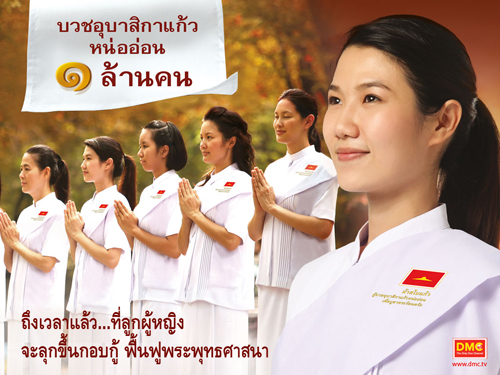
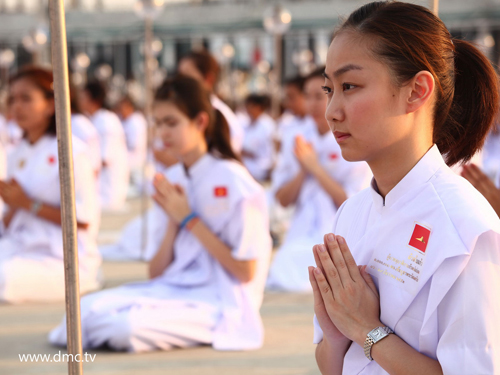
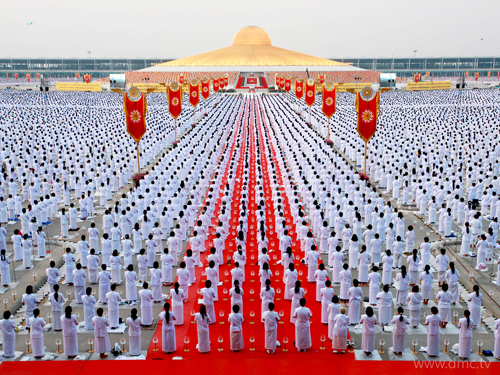
In Budddhism, a lady who takes refuge in the triple gem and supports the Buddhist activities is called an Upasika. Since Lord Buddha’s time, Upasikas have played an important role in patronizing the temples and the monks and are considered a part of the four main groups of Buddhists: Bhikku, Bhikkuni, Upasok, Upasika. An example of an Upasika worth mentioning is Maha Rattana Upasika Visakha, who built Bubbharam, an important Buddhist temple. Upasika Kaew is a morality training program for ladies to explore the eight precepts and follow the Middle Way, which is a path of enlightenment and purity. The ladies who take part in this program will learn about discipline and it is repetitive to keep their body and their mind pure and bright. This training program will improve the morality level in both Thailand and Buddhism as a whole.
2. Earth Day Festival ; 22-Apr-2011 (Package dates-20 -24 April)
As the earth day is coming, Buddhist Laypeople from all over the world need not be reminded that an opportunity has arrived once again to cultivate the supreme merits through the Earth day ceremony; it is gathered through the casting The Great Master, Phramongkolthepmuni (Sodh Candasaro) statue and the offering neccesities to the assembly of Buddhist monks.
The event is one of the biggest and the most anticipated event of the year at Wat Phra Dhammakaya. What makes it more special this year is the fact that the Venerable PraRajpavanavisuth, the Abbot of Dhammakaya Temple has invited over 100,000 Buddhist monks from nationwide temples to take part in this Sangha Assembly to be offering neccesities at the Meditation Stadium. This assembly of Sangha is to offer food and basic neccesities required in the daily life of monks (Sangha). Afterward, the casting of The Great Master, Phramongkolthepmuni (Sodh Candasaro) statute will take place at the Grand Meditation Stadium at the vanue of peace, the Maha Dhammakaya Cetiya.
3. Ordination of 100,000 Monks ; 13 Mar – 30 Apr 2011(Package Dates: 28 April – 2 May)
The historic moments of the 7,000 monks mass ordination program and the 100,000 monks mass ordination program has shown these positive personal changes happen easily when gentlemen ordain, become Buddhist monks and behave according to the core code of conduct. The success of the two programs illustrate the possibility of bringing about an great impact that will not only restore peace and glory to the land of smiles, but also, ensure the everlasting harmony everyone is longing for.
For this reason, the Thailand’s Sangkha, the Religion, Art and Culture Commissioners of the House of Representatives, the Dhammakaya temple as well as the other co-supporters listed below are organizing the 2554 B.E. Nationwide Summer Ordination Program of 100,000 Monks from the 13th of March to the 30th of April 2554 B.E. at training temples in every district across Thailand. The objective of allowing 100,000 gentlemen across the country to live as true monks, is to strengthen the societal ethics and moral conduct in Thai community.
4. Vesak Day Festival ; 17-May-2011( Buddha purnima day) …(Package Days: 15 – 19 May)



The Vesak Day is one of the most important days in Buddhism as it is the day Buddhists commemorate three important events in the Lord Buddha’s life. It is the anniversary of his birth, enlightenment and Nirvana. On the full moon night of Vesak, the sixth lunar month, Prince Siddhartha Gotama was born on the purpose of enlightenment aiming at teaching the universal inner peace to humankind. On the same day thirty-five years afterwards, Prince Siddhartha gained the profound knowledge through enlightenment. During the first watch of the night under the bodhi tree, his mind was calm and purified by meditation. His insight showed the endless cycle of Samsara – from birth, aging, ailing and death. Also, He knows how to eradicate the seed of birth and re-birth and the roots of all decay. Since then, the light of His wisdom has been radiated to everyone.
5. ‘Kathina’ Robe Offering Ceremony ; 06-November-2011 (Package Dates : 4 - 8 Nov)
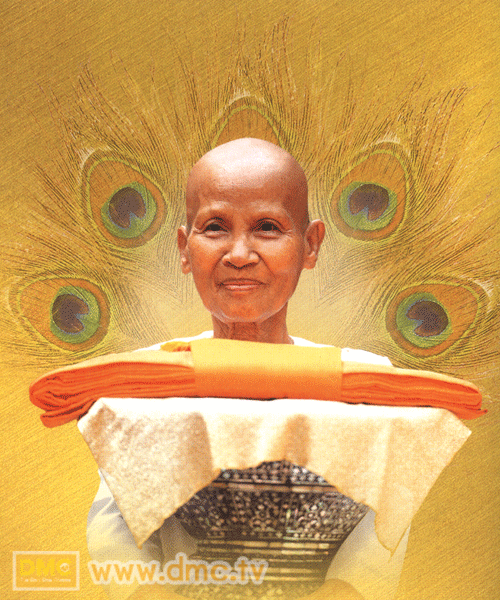
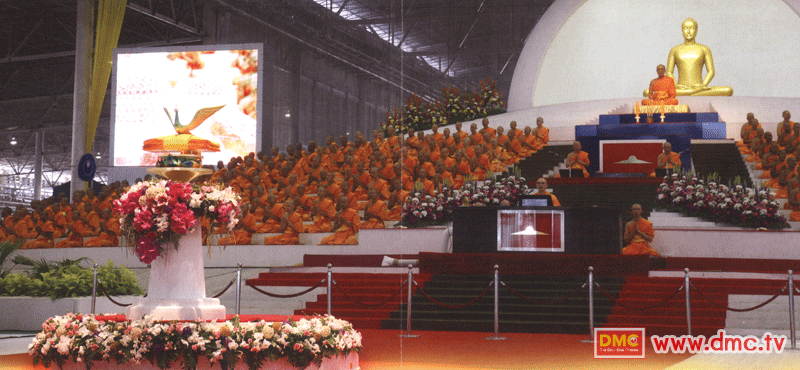
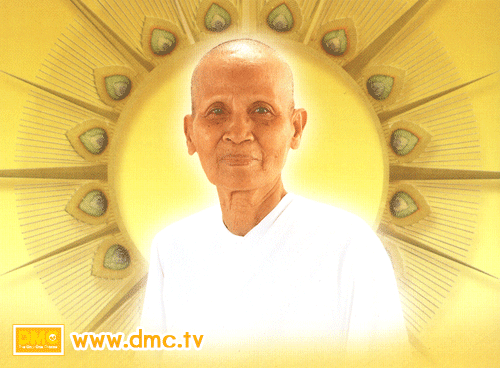
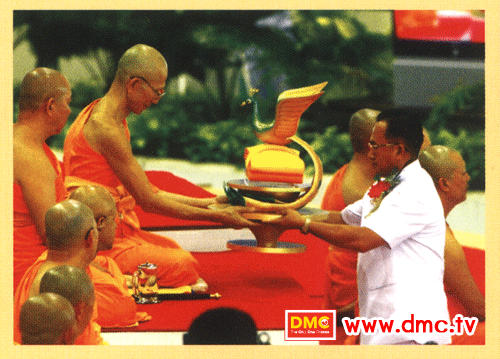
Kathina is the annual robe offering season for the monks. At the end of the Buddhist Lent period, it is time for the monks in the monasteries to get the new set of their robes. At Dhammakaya Temple, this year, the Kathina Ceremony falls on 6thNovember 2011. Enjoy this day with all activities in meritorious atmosphere. Starting from alms-giving early in the morning, we will meditate together before giving lunch to thousands of monks. The highlight would be in the afternoon when all the Buddhist assembly will participate in the Kathina Robe Offering Ceremony. Be part of the robe parade or enjoy witnessing the endless line of it.
The word ‘Kathina’ itself refers to the wooden frame that hold tight the saffron clothes enabling monks sew them firm and neat. Kathina tradition was originated during the Lord Buddha’s time. It first happened when a group of 30 monks were on the way to meet Lord Buddha. Unfortunately, they got stuck on the way in the rain. Through the muddy passage, their robes were dirty and shabby with mud. As a result, Lord Buddha granted permission for monks who completed their 3-month rains retreat to have a new set of saffron, so called “Kathina.” The period permitted is within one month after the lent period ends. Thus, Kathina is a time-limit opportunity for the robe offering.
For any Information, Please contact:
Incentives and Conference Planners
Ashish Barua / Ritesh Joshi
# 18-1, Gopal Nagar, Malkajgiri West, Secunderabad – 500047, Hyderabad. India
Corporate Office : DB 58, First Floor, Sector 1, Salt Lake City, Kolkata. India. T: 91 33 65671523 , T/Fax: 91 33 400438048
M: +91 9849106519 (Ashish) , +91 8954888048 ( Ritesh) email: ashish@iconplanners.com , ritesh@iconplanners.com























POLITICS IS SACRED with GOOD GOVERNANCE